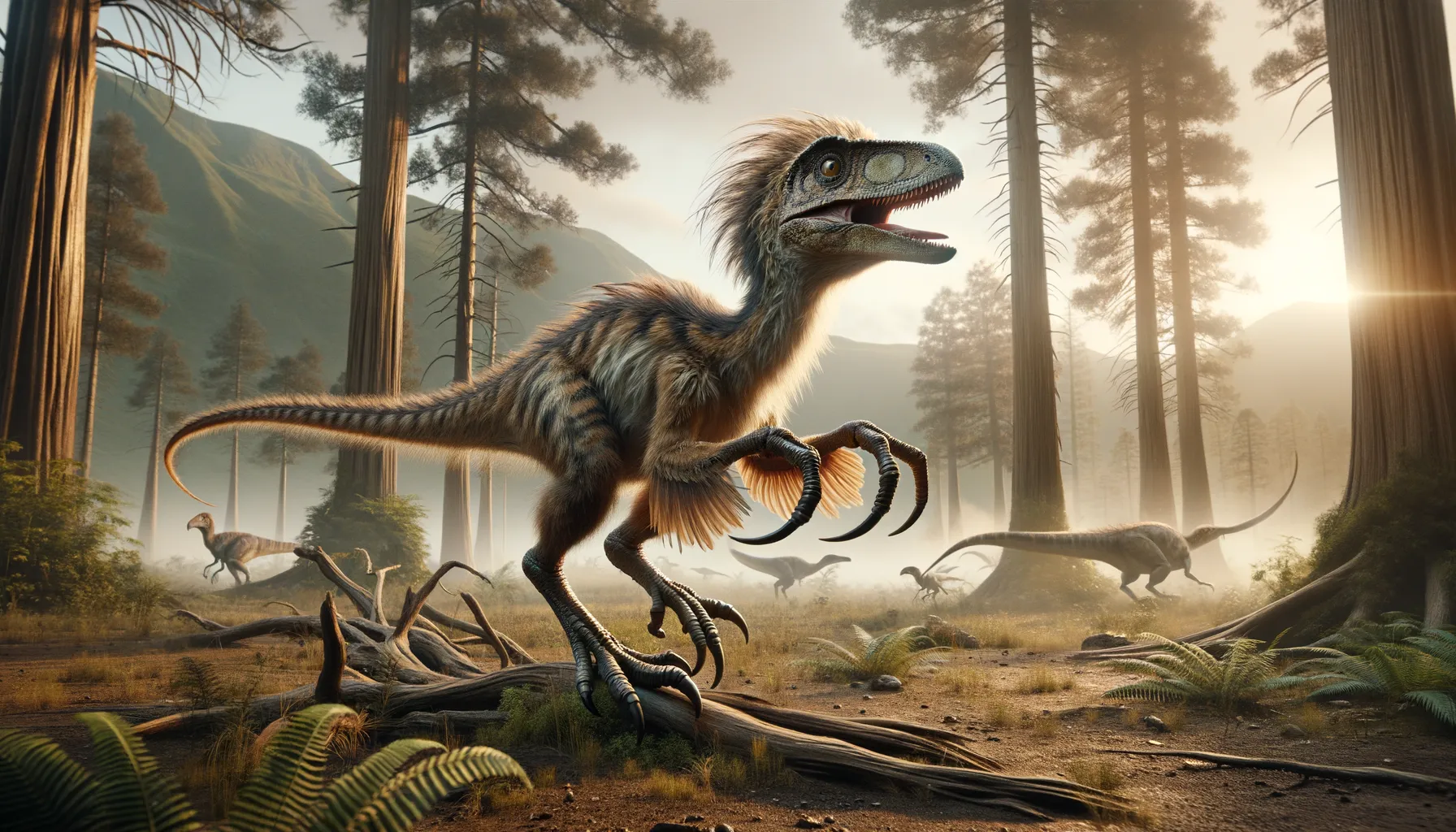
Bambiraptor
A tiny predator with big ambitions.
Period
Cretaceous
Length
About 1 meter (3.3 feet) long.
Height
Roughly 0.6 meters (2 feet) tall.
Weight
Approximately 5 kg (11 lbs).
Bambiraptor was a small, feathered dinosaur from the Late Cretaceous period, known for its bird-like characteristics. It had a lightweight body, suggesting it was agile and quick. With sharp, curved claws and a keen intellect, it was well-adapted to its environment. The discovery of Bambiraptor provided valuable insights into the evolution of birds from dinosaurs.
Diet
Bambiraptor was a carnivorous dinosaur, feeding primarily on small animals like lizards and mammals. Its diet may have also included insects and possibly carrion when available.
Hunting
An agile hunter, Bambiraptor used its speed and intelligence to catch prey. It likely relied on stealth and quick bursts of speed, using its sharp claws to seize its prey.
Environmental challenges
During the Cretaceous, Bambiraptor faced environmental challenges such as changing climates and diverse ecosystems. Predator presence required constant vigilance to avoid becoming prey themselves. Competition for resources was another continual challenge, impacting its survival and adaptation.
Speed
Relatively fast for its size.
Lifespan
Estimated to be similar to modern small birds.
First discovery
Discovered in 1993 in Montana, USA.
Fun Facts
- Bambiraptor was a small, bird-like dinosaur that lived around 75 million years ago during the Late Cretaceous period.
- The name 'Bambiraptor' means 'Bambi thief', and it was named after the famous Disney character Bambi because of its small and delicate appearance.
- Despite its small size, Bambiraptor had sharp claws and teeth, suggesting it was a swift and agile predator.
- Bambiraptor fossils were first discovered in Montana, USA in 1995 by a 14-year-old fossil hunter named Wes Linster.
- Bambiraptor is believed to have been covered in feathers, making it a close relative to modern birds.
- The dinosaur's brain size relative to its body suggests it was quite intelligent compared to other dinosaurs.
- Bambiraptor shared a lot of features with Archaeopteryx, an ancient bird-like dinosaur often recognized as a link between birds and dinosaurs.
Growth and Development
Like many small theropods, Bambiraptor likely experienced rapid growth during its early years. As it reached maturity, it would have developed stronger muscles and agile movements. The development of feathers played a role in heat regulation and possibly in social interactions.
Habitat
Bambiraptor lived in what is now North America, which was characterized by diverse habitats including forests and floodplains. This environment provided ample cover and food resources, supporting its hunting and living needs. Seasonal variations would have influenced its habits and movements.
Interaction with other species
Bambiraptor coexisted with various other dinosaur species, from large herbivores to fellow small predators. It likely encountered competition for prey with other carnivores. Potential symbiotic relationships or conflict situations would be crucial in its daily life.
Natural lifespan
Its natural lifespan was akin to that of modern small birds.
Reproduction
Bambiraptor reproduced like other theropods, laying eggs in nests. It likely exhibited some parental care, protecting and possibly feeding its young. Nurturing environments would have been selected to ensure the safety and development of its offspring.
Social behaviour
While specific social behaviors of Bambiraptor are not well-documented, it may have lived and hunted in small groups. Such social structures could aid in hunting efficiency and protection. Communication through vocalizations or physical displays may have been part of its social interactions.
Fossil locations
Bambiraptor fossils have primarily been found in Montana, USA. These discoveries provided important insights into the diversity of small theropods during the Late Cretaceous. The sites have helped to paint a clearer picture of dinosaur ecosystems in North America during this period.
